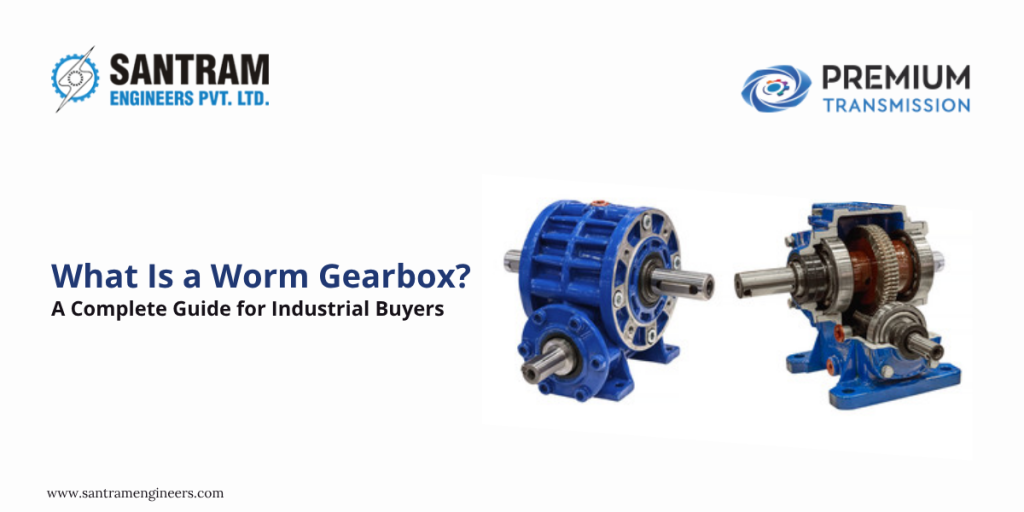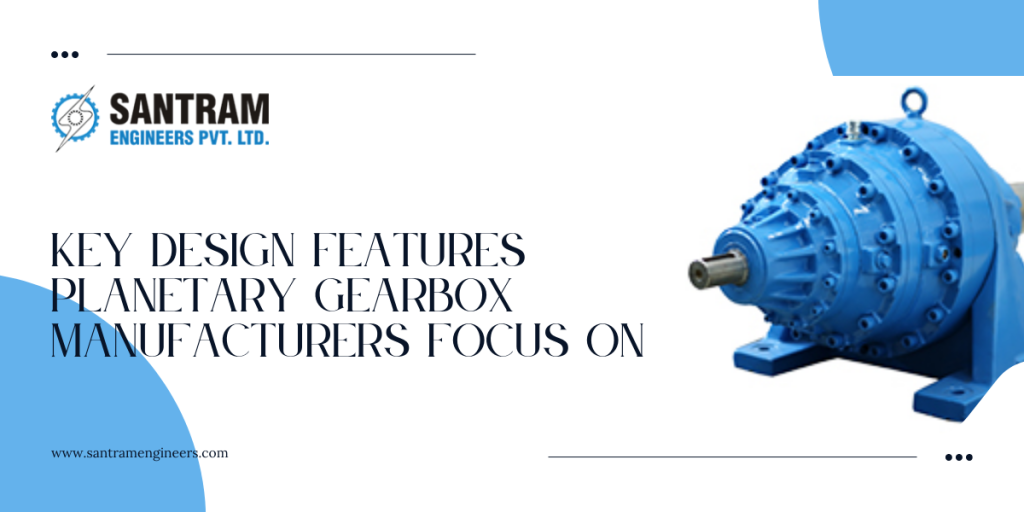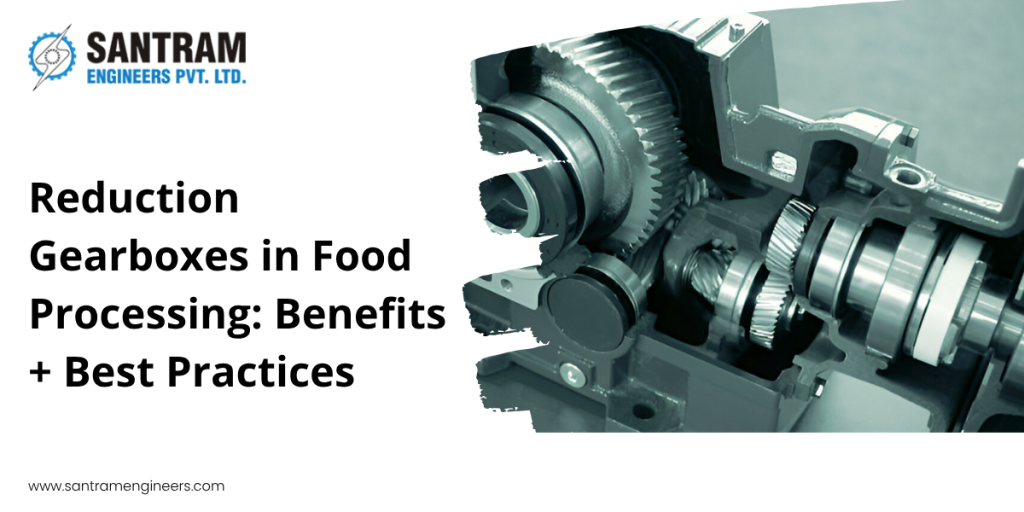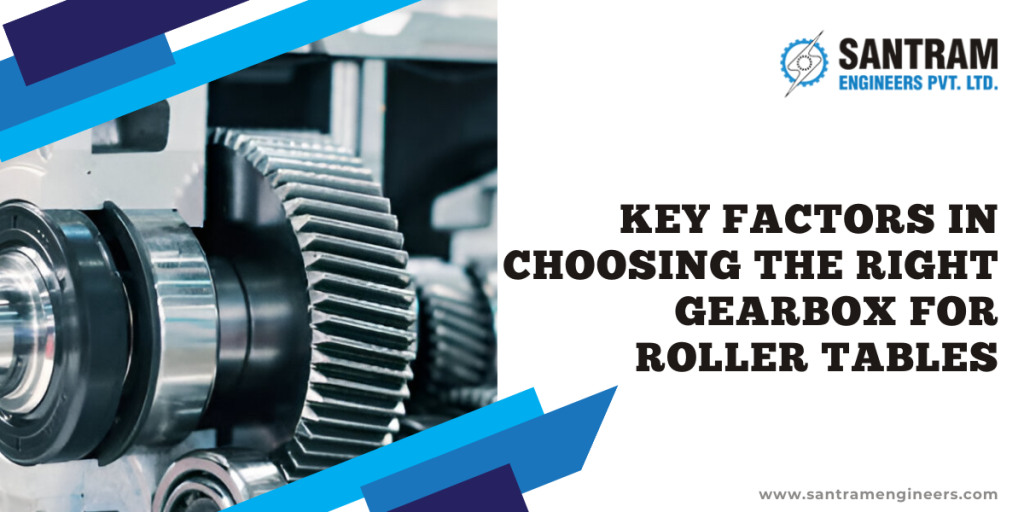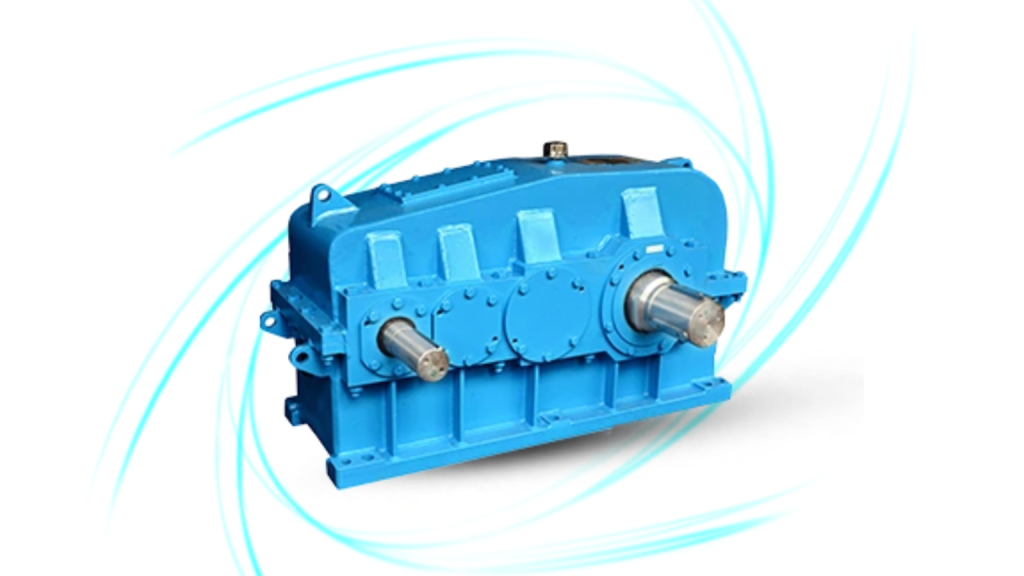Industrial gearboxes are critical components in many industrial sectors, enabling the transfer of power to machinery while adapting speeds and torques for various applications. One key factor that influences the performance of these gearboxes is the gear ratio. Whether you’re in manufacturing, material handling, or even the energy sector, understanding the significance of gear ratios is essential to ensure that machinery operates efficiently and reliably.
At Santram Engineers, we specialise in providing high-quality industrial gearboxes from trusted brands like Premium Transmission. Our deep knowledge of gear ratios and their impact on performance helps us provide the best solutions for industries such as plastic, paper, steel, cement, and construction.
This blog post will dive into what gear ratios are, how they affect industrial gearboxes, and how you can select the optimal ratio for your machinery. By the end, you’ll better understand how to maximise your industrial gearbox’s efficiency and longevity.
What Is a Gear Ratio?
In its simplest form, a gear ratio refers to the ratio between the number of teeth on two meshing gears. It is crucial in determining how the gearbox adjusts speed and torque as power is transferred.
Basic Formula
The gear ratio is calculated using the following formula:
Gear Ratio = Number of Teeth on Driven Gear ÷ Number of Teeth on Driver Gear
For instance, if the driven gear has 60 teeth and the driver gear has 20 teeth, the gear ratio would be:
60 ÷ 20 = 3:1 Gear Ratio
Illustrative Example
Imagine you’re riding a bicycle with two gears – a larger one on the rear wheel and a smaller one on the pedals. If the rear gear has 60 teeth and the pedal gear has 20 teeth, the gear ratio would be 3:1, meaning that for every full rotation of the pedal, the rear wheel rotates three times. This simplifies how a gear ratio affects mechanical systems, providing an easy way to visualise its impact on speed and torque.
Real-World Analogy
A car’s transmission system offers another great analogy. When you drive in first gear, the car’s gears have a higher ratio, making the car move slowly but with increased torque for uphill driving. In contrast, a lower gear ratio in higher gears allows the car to go faster but with reduced torque, making it ideal for highway driving.
How Gear Ratios Impact the Performance of Industrial Gearboxes
The gear ratio plays a pivotal role in determining both the speed and torque of machinery. Here’s a breakdown of how different ratios affect performance:
Torque and Speed Balance
- Larger Gear Ratios = Increased torque, reduced speed. This means that machinery will have more force available to handle heavier loads, but it will operate more slowly.
- Smaller Gear Ratios = Increased speed, reduced torque. These are ideal for applications that require high-speed operation, but may not be able to handle heavy loads as effectively.
Practical Example: Gear Ratios in Machinery
Consider a conveyor belt in a factory. A higher gear ratio would provide the necessary torque to move heavy loads slowly and steadily, while a lower gear ratio would increase the speed, ideal for transporting lighter materials quickly. Similarly, gear ratios affect mixers and pumps in industrial settings, where the proper ratio ensures smooth operation and prevents overloads.
Impact on Load Handling
The load handled by machinery significantly impacts the required gear ratio. A higher gear ratio is ideal for heavy-duty applications where torque is more critical than speed. Conversely, lower gear ratios are used when higher speeds are necessary, such as in automotive or textile industries.
Types of Gear Ratios in Industrial Gearboxes
Standard Ratios
In the industrial sector, several common gear ratios are used to meet specific needs:
- 3:1: A general-purpose ratio used in applications where moderate torque and speed are required.
- 5:1: Ideal for heavier industrial applications needing more torque.
- 10:1: Common in systems where very high torque is required at slower speeds, such as heavy machinery.
Custom Gear Ratios
Some industries, like robotics or mining, require custom gear ratios to optimise machinery for unique tasks. Custom ratios allow for more precise control of speed and torque, ensuring machines can handle specialised functions like high-speed rotation or extreme load capacities.
Worm Gears
Worm gearboxes often operate with very high gear ratios, providing significant torque at lower speeds. These gears are commonly used in applications requiring compact systems, such as mechanical odometers or windshield wipers, where space is at a premium.
How to Choose the Right Gear Ratio for Your Industrial Gearbox
Choosing the correct gear ratio for your industrial gearbox depends on several factors. Here’s how to ensure you make the best selection:
Factors to Consider
- Application Type: Each application, whether in manufacturing, material handling, or automotive, requires different speed and torque settings. For example, conveyors need more torque at lower speeds, while automotive systems require high-speed operation with moderate torque.
- Required Output Speed: Consider the speed at which your machinery needs to operate. Whether your equipment needs to run slowly with maximum torque or quickly with less force will dictate the appropriate gear ratio.
- Torque Requirements: The heavier the load, the more torque is needed. Ensure the selected gear ratio can provide enough force to move heavy items without overloading the system.
- Operational Conditions: Consider environmental conditions such as temperature, humidity, and vibration, which may affect the performance of the gearbox and gear ratio.
Choosing the Correct Gearbox
By selecting the proper gear ratio, you improve efficiency, reduce energy consumption, and prevent overloading and damage to the machinery. A well-chosen gear ratio ensures smooth operation, reducing maintenance costs and enhancing overall performance.
Features and Specifications of Industrial Gearboxes in Relation to Gear Ratio
1. Teeth Count and Material
The number of teeth on each gear and the material used (steel, brass, etc.) are critical in determining the durability and performance of the gearbox. High-strength materials ensure the gearbox can withstand the stress and load imposed by specific gear ratios.
2. Gearbox Types
Common gearbox types include helical, bevel, and worm gearboxes. Each type can handle different gear ratios suited to particular applications, such as high torque or high-speed operation.
3. Efficiency Ratings
Efficiency is directly influenced by the gear ratio, with higher ratios often resulting in increased friction and energy losses. Choosing the correct ratio can help reduce losses and improve overall efficiency, enhancing long-term operational costs.
4. Lubrication and Maintenance
Lubrication is essential for maintaining the optimal performance of a gearbox. Proper lubrication ensures the gears operate smoothly, reducing friction and wear, which can otherwise affect the gear ratio over time.
Real-World Applications of Gear Ratios in Industrial Gearboxes
1. Manufacturing and Automation
Gear ratios are used to adjust the speed and torque in automated systems, such as conveyor belts and assembly lines, ensuring optimal performance and minimising downtime.
2. Automotive and Heavy Machinery
In the automotive and construction industries, gear ratios are vital for balancing speed and torque in heavy machinery, ensuring that vehicles and equipment function efficiently in various operating conditions.
3. Energy Sector
Wind turbines, one of the leading sources of renewable energy, rely on gear ratios to maximise their efficiency. By optimising the gear ratio, wind turbine systems can generate more power from lower wind speeds.
4. Worm Gear Applications
Worm gears are used in space-constrained environments where high torque at low speeds is required. These gears find use in mechanical systems such as winches, hoists, and even elevators.
Benefits of Optimising Gear Ratios in Industrial Gearboxes
1. Increased Efficiency
Optimising gear ratios improves the overall operational efficiency of machinery, reducing energy consumption and enhancing productivity.
2. Cost Savings
By preventing improper gear ratio selection and avoiding overloading, you reduce downtime, repair costs, and premature wear and tear.
3. Improved Durability
Selecting the correct gear ratio helps minimise stress on machinery, extending the lifespan of both the gearbox and related components.
4. Sustainability
Optimising gear ratios contributes to sustainable operations by reducing the energy consumed and enhancing overall operational efficiency.
Common Mistakes to Avoid When Choosing Gear Ratios
1. Underestimating Load Requirements
Choosing a gear ratio that doesn’t match the load capacity can cause system failures and lead to costly repairs. Always ensure that your ratio aligns with the actual load requirements.
2. Overlooking Speed Requirements
Selecting a ratio that provides either too much speed or too much torque can result in inefficient operation. It’s essential to consider both factors carefully.
3. Ignoring Environmental Factors
Temperature, moisture, and dust can all affect gear ratio performance. Always account for these variables when selecting a gearbox.
4. Lack of Regular Maintenance
Gear ratios may need adjustment as machinery ages. Regular checks and maintenance are necessary to ensure the system continues to operate efficiently.
Conclusion
In industrial applications, selecting the correct gear ratio for gearboxes is a crucial factor in ensuring optimal performance. The gear ratio directly influences torque, speed, and load-handling capacity, making it essential for applications across various industries. Whether it’s maximising torque for heavy loads or increasing speed for efficient operations, a carefully chosen gear ratio can significantly enhance the lifespan, energy efficiency, and overall reliability of machinery. Properly considering the gear ratio can minimise downtime, reduce maintenance costs, and improve the overall efficiency of the machinery in any industrial setting.
Frequently Asked Questions
1. How does a higher gear ratio affect industrial machinery?
A higher gear ratio increases torque, which allows machinery to handle heavier loads, but it reduces speed. This is ideal for applications that need more force at lower speeds.
2. What factors should be considered when choosing a gear ratio for an industrial gearbox?
You should consider the application type, required output speed, torque requirements, and environmental conditions to ensure the gearbox functions optimally.
3. Can a custom gear ratio improve machinery performance?
Yes, a custom gear ratio tailored to specific needs can optimise machinery for unique applications, enhancing both performance and efficiency.
4. How does gear ratio impact the efficiency of an industrial gearbox?
Gear ratio affects friction and energy losses. Properly selecting the correct ratio can reduce energy consumption, improve efficiency, and lower operational costs.
5. What maintenance is needed to keep gear ratios optimal in industrial gearboxes?
Regular lubrication, wear monitoring, and periodic adjustments to the gear ratio as machinery ages are essential for maintaining optimal performance.
6. How can gear ratios contribute to sustainability in industrial operations?
By optimising energy use and reducing mechanical wear, proper gear ratio selection helps minimise energy consumption, contributing to more sustainable industrial processes.
Optimise Your Industrial Gearbox Performance Today
Choosing the correct gear ratio for your industrial gearbox is critical to improving performance, reducing energy consumption, and extending the lifespan of your machinery. At Santram Engineers, we understand the importance of selecting the perfect gearbox tailored to your specific needs. With our expertise in industrial gearboxes and gear motors, we help businesses across various industries, including plastics, cement, steel, and more, optimise their machinery performance. By relying on expert knowledge and high-quality products from leading brands, you can ensure your industrial systems run smoothly and efficiently.
Contact us today to explore the best gearbox solutions for your operations. Visit Santram Engineers for more details!




